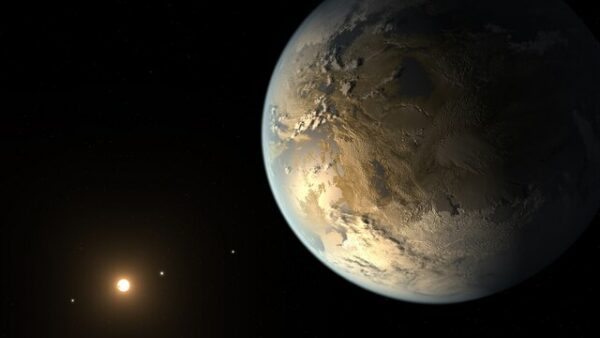On April 17, 2014, NASA announced a milestone in the search for life beyond Earth: the confirmation of Kepler-186f, the first Earth-size planet discovered orbiting within the habitable zone of another star. This groundbreaking discovery was made possible by the Kepler Space Telescope, a space observatory launched in 2009 with a singular mission—to survey our region of the Milky Way galaxy and identify Earth-like planets orbiting other stars.
The habitable zone, sometimes referred to as the “Goldilocks zone,” is the orbital region around a star where temperatures are just right—not too hot, not too cold—for liquid water to potentially exist on a planet’s surface. Liquid water is considered a key ingredient for life as we know it, and finding planets in this zone is a top priority for astrobiologists and planetary scientists.
Kepler-186f orbits a star approximately 500 light-years away in the constellation Cygnus. The host star, Kepler-186, is a red dwarf—cooler and dimmer than our Sun. Kepler-186f is the outermost of five known planets orbiting this star and receives about one-third the sunlight Earth receives. Though this may sound chilly, scientists noted that an Earth-like atmosphere could, in theory, help trap enough heat to sustain liquid water.
What made the discovery so extraordinary was the planet’s size: it is only about 10 percent larger in diameter than Earth. Most previous exoplanets found in or near habitable zones were significantly larger—often categorized as “super-Earths” or even gas giants—making them less promising candidates for Earth-like conditions. Kepler-186f’s Earth-like size increases the probability that it is a rocky planet, and thus more geophysically similar to our own.
The confirmation of Kepler-186f marked a shift from the mere possibility of other Earth-like worlds to tangible evidence. “This is a major step forward,” said Elisa Quintana, a research scientist at the SETI Institute and the lead author of the paper announcing the finding, published in Science. “Kepler-186f is the first validated, Earth-size planet in the habitable zone of a star other than the Sun.”
The discovery was not merely a triumph of technological precision but also a culmination of a massive data analysis effort. Kepler identified potential planets by monitoring the brightness of over 150,000 stars, searching for tiny, regular dips caused by planets passing—or transiting—in front of them. These dips could last only a few hours and might occur just once every orbit, meaning scientists had to sift through years of data to detect and verify the signals.
Because Kepler-186f lies near the outer edge of the habitable zone, its climate and capacity to support life remain speculative. The nature of its atmosphere—if it has one—remains unknown, as Kepler was not equipped to perform spectroscopic analysis. Even so, its mere existence prompted a flood of excitement and renewed urgency for follow-up missions capable of probing exoplanet atmospheres more directly.
In many ways, Kepler-186f was a symbol of possibility. It proved that small, rocky planets can indeed exist in the habitable zones of stars very different from our Sun. Moreover, it suggested that such planets may be far more common than previously assumed, particularly around the abundant red dwarfs that populate the galaxy.
The discovery also set the stage for future missions, such as the Transiting Exoplanet Survey Satellite (TESS), the James Webb Space Telescope, and the planned Nancy Grace Roman Space Telescope, all of which aim to build on Kepler’s legacy by locating and analyzing Earth-like worlds in greater detail.
In the words of NASA associate administrator John Grunsfeld, “The discovery of Kepler-186f is a significant step toward finding worlds like our planet Earth. Future missions will be able to find and characterize more planets and perhaps bring us closer to answering the question: Are we alone?”






